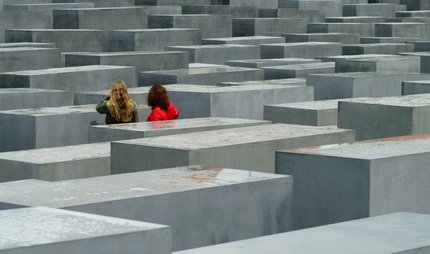
Memorial to the German Resistance
How individuals and groups stood up to Nazism in Germany and occupied Europe
Courageous people gave their lives to bring down the Nazi dictatorship. The Gedenkstätte Deutscher Widerstand commemorates them.
On the morning of 20 July 1944, Claus von Stauffenberg flew to a meeting at the Wolf’s Lair, Hitler’s military headquarters in East Prussia. In his briefcase, he had a bomb to kill Hitler and bring down the Nazi regime. The attempt failed. The very same night, shortly after midnight, Stauffenberg and his co-conspirators were executed in the courtyard of the Bendlerblock in Berlin.
At this place today, the Gedenkstätte Deutscher Widerstand commemorates not only Stauffenberg, but also all the other courageous people and groups who resisted the Nazis. Since 1953, the courtyard has been a place of remembrance. The exhibition and educational centre were opened in 1968.
A place that shaped history: the Bendlerblock
The Bendlerblock is a building complex that was constructed from 1911 to 1914 for the imperial German navy. After the First World War, the newly established ministry of defence also moved into the buildings. Under the Nazis, several departments of the naval high command and the foreign and defence office were housed in the Bendlerblock. Also based here was the supreme high command of the German army, where General Friedrich Olbricht plotted a coup against Hitler.
Colonel Claus Schenk Graf von Stauffenberg had been a staff officer at Olbricht’s office since 1943 and attended military briefings at the Wolf’s Lair, Hitler’s military headquarters in East Prussia. On 20 July 1944 he carried out an assassination attempt there, but Hitler survived the explosion and the coup failed. That very same night, Stauffenberg, along with Olbricht and fellow resistance members Albrecht Mertz von Quirnheim and Werner von Haeften were executed in the courtyard of the Bendlerblock, which is now a memorial to them.
Commemorations of the resistance
On 20 July 1952 the foundation stone was laid for a memorial in the courtyard. A year later, the mayor of Berlin, Ernst Reuter, unveiled the memorial. On 20 July 1968, an educational and memorial centre opened, with a permanent exhibition on the military resistance to the Nazis. In the late 1980s, at the initiative of the then mayor, Richard von Weizsäcker, the memorial centre was extended to commemorate not only Stauffenberg’s plot, but all those in Germany who resisted national socialism.
The exhibition was updated in 2014, and now includes 1000 photographs and documents showing the resistance among the labour movement, the church, artists and intellectuals, Jews, Sinti and Roma, as well as the ‘silent helpers’ who came to the aid of Jews and refugees in hiding. The exhibition shows how these peoples’ resistance developed, what motivated them and how they formed networks. Other episodes include Georg Elser’s assassination attempt in November 1939, the Kreisau Circle, the White Rose and the Red Orchestra. You can not only find out about the resistance of these people and groups, but also the Nazi dictatorship’s ruthless response to the actions of the resistance.
Guided tours take place every Sunday at 3pm.
Opening hours
| Monday | |
|---|---|
| Tuesday | |
| Wednesday | |
| Thursday | |
| Friday | |
| Saturday | |
| Sunday |



